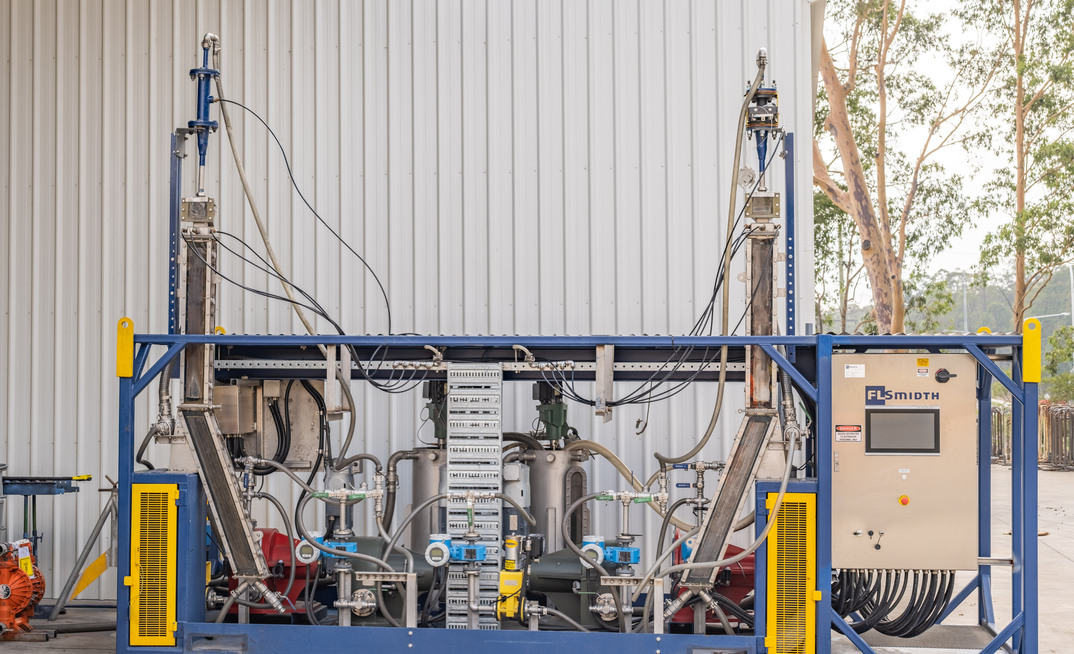The REFLUX™ Flotation Cell (RFC™) combines several technologies to achieve superior flotation performance at a magnitude far beyond the capacity of existing flotation devices.
This technology was developed by FLS in collaboration with Prof. Kevin Galvin and his team at the University of Newcastle, Australia who is also the inventor. Its unique design demonstrates several hydrodynamic advantages, with the ability to recover a wide size distribution of minerals at a rate of up to 7-10 times faster than traditional methods.
Changing the perspective on productivity
The ability to operate at gas and wash water fluxes above what is traditionally possible with any other existing flotation equipment sets this technology apart and allows for production of superior quality flotation product at elevated recovery. The RFC can be used in any flotation application ranging from rougher flotation to cleaning applications and across all mineral types. The high capacity nature of the technology allows for easy improvements. The RFC utilises significantly less flotation volume than ordinarily required. This footprint saving not only translate into lower installation costs, but also offer savings in terms of air and wash water demands when considering overall flotation cross-sectional area. Footprint savings of up to 80% are possible.
Product features - focused improvement of flotation fundamentals
The RFC consists of the main vertical vessel positioned above a system of inclined channels. The inclined channels enhance the segregation between bubbles and downward-flowing liquid, allowing for operation at elevated internal gas fractions. Feed and air are contacted in a high shear rate environment as it enters the cell via a central sparging system to expedite flotation kinetics.
The float product emerges through an annulus surrounding the sparger system, while the tailings discharge via the zone below the inclined channels.
A plenum chamber encloses the top of the cell, supplying clean fluidisation/wash water for counter-current washing of the rising bubbles with a positive bias flux to promote effective gangue rejection.
Q: What particle size range can this technology treat?
The RFC has been successful in treating feed materials ranging from ultra fine (<45micron) to coarser particle size distributions up to 212microns in hardrock.
Q: Can the RFC be retrofitted to my existing flotation cells?
The unique nature of the design and use of the lamella plates means this isn't something you can retrofit onto existing flotation cells. The technology by its nature does offer the ability to fit into space constrained areas of an existing system and serve to off load overloaded flotation circuits or improve performance of existing circuits at a reduced cost.
Q: For which applications can RFC be of particular interest?
Implementation in tailings retreatment applications offers additional revenue possibilities with lower CAPEX and OEPX where marginal projects can become viable due to improved flotation efficiencies achieved by the RFC.
Q: Is site pilot testing available?
Pilot site trials use a containerised test skid housed in a standard 20 ft shipping container. The test skid can be deployed quickly and can be commissioned in less than a week, with typical test programs wrapping up in 4 weeks of testing time. Utility and feed requirements are minimal with typical tests requiring less than 50 litres a minute of feed slurry.
Q: Is laboratory testing available?
FLSmidth's Material Testing & Research Center is routinely used to perform scoping tests to establish baseline performance expectations for the RFC. Contact us for testing opportunities.























